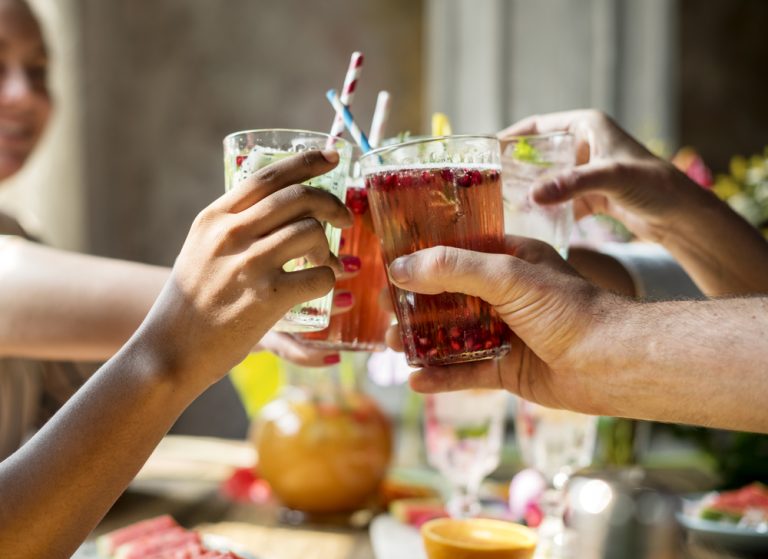You may also experience a period of decreased energy at the same time every day, such as in the mid-afternoon. Drinking alcohol can affect the quality and length of your sleep, leading to sleep disorders — such as insomnia and sleep apnea — in some. During alcohol withdrawal, it’s crucial to address both the physical symptoms of withdrawal and any underlying mental health conditions that may contribute to insomnia, such as anxiety or depression.

Evidence-Based Strategies for Managing Sleep During Recovery
Overall, people who drink alcohol before bed may end up sleeping for a shorter length of time than they would have if they had not consumed alcohol. Their sleep quality is reduced, and they are likely to have several disruptions in their sleep throughout the sleep cycle. Since insomnia after stopping drinking alcohol is a diuretic, it may cause people to wake up earlier in the morning, and they may wake up several times to use the bathroom overnight.
How to Fall Asleep Fast: 10 Expert-Recommended Tips

Alcohol is a depressant, meaning it can slow down the brain and body. When someone who has been drinking heavily suddenly stops, their body can have difficulty readjusting to the lack of alcohol in its system. This can lead to difficulty sleeping, as well as other withdrawal symptoms such as anxiety and tremors. Beyond the neurological realm, alcohol also alters behaviour, potentially leading to poor sleep hygiene. Late-night drinking can contribute to irregular sleep patterns, making it harder to fall and stay asleep. The sedative properties of alcohol may create a deceptive sense of improved sleep quality, while in reality, it compromises the restorative nature of deep sleep.
Ria Health offers several FDA-approved medications for alcohol use disorder. When combined with counseling, this approach is proven highly effective. Excessive drinking has numerous impacts on your body and mind, ranging from mild to severe. Learn which signs to look out for, and how to care for your well-being.
However, a subset of patients may have fragmented sleep and disturbances of consciousness that predict a guarded prognosis for future episodes of DTs (Kotorii et al., 1982, Nakazawa et al., 1981). The alcohol level in blood is determined by gender, weight, number of drinks consumed over a unit of time, and rate of metabolism. It is generally metabolized at a rate of 0.01 to 0.02 g% per hour (Arnedt et al., 2011b).
Managing conditions
Alcohol-induced sleep disturbances can exacerbate mental health conditions such as anxiety and depression, while poor mental health can also negatively impact sleep quality. Understanding this interplay is crucial for addressing both sleep and mental health issues effectively. Sleep apnea is a sleep disorder where breathing starts and stops throughout the night, often resulting in snoring and reduced quality of sleep. Alcohol can relax your upper airway muscles, exacerbating sleep apnea symptoms. Research shows that excessive alcohol use can increase the risk of sleep apnea by 25%.² Alcohol can also trigger sleep apnea for someone who previously didn’t experience it. While it’s unlikely one alcoholic drink will have a significant impact on your sleep quality, this varies by individual and context.
- Being a sedative and depressant of the central nervous system, alcohol can increase feelings of tiredness and sluggishness.
- This disruption leads to fragmented, less restful sleep that can leave people feeling tired and sluggish the next day.
- Symptoms may include anxiety, irritability, shaking, sweating, nausea, vomiting, headaches, insomnia, and cravings for alcohol.
- This peak may be blunted or delayed in those with AD (Kuhlwein et al., 2003).
- Alcohol withdrawal insomnia can be prevented by avoiding alcohol or limiting consumption.
This might include periodic sleep assessments, medication adjustments if needed, therapy sessions focused on sleep management, and connection with support groups or resources. Some people may continue to experience occasional sleep difficulties even after months of sobriety, particularly during times of stress or major life changes. This is normal and doesn’t indicate a failure in recovery, but rather highlights the importance of ongoing sleep management strategies. Having supportive family members or friends who understand the recovery process can reduce stress and anxiety that often interfere with sleep.
Lasting around seven minutes, stage amphetamine addiction treatment one happens when a person first falls asleep. The heart rate, brain waves, and eye movements slow down, and the body enters light sleep. ” The connection between alcohol and insomnia is complex, and it is not completely understood. This guide will explore the alcohol and insomnia connection more closely and provide information about treatment options.
Medical professional hub
A normal sleep architecture or sleep cycle involves three stages of non-rapid https://jordansheel.in/understanding-drug-alcohol-addiction-2/ eye movement (NREM) and one stage of rapid eye movement (REM). These four sleep stages follow one another in 90 to 120-minute cycles. Coastal Detox is a state-licensed medical detox center helping individuals overcome drug addiction, alcoholism, and co-occurring disorders. We combine advanced medical treatment with holistic care and clinical therapy to support whole-person healing. Drug detoxification and withdrawal typically exacerbate feelings of stress, anxiety, and irritability.
- But the truth is, alcohol’s alleged “sleep-enhancing” benefits may not be all they’re cracked up to be.
- The impact of drinking on insomnia may be particularly acute in older adults.
- Alcohol withdrawal insomnia occurs because alcohol disrupts the brain and body’s natural balance, known as homeostasis.
- Alcohol can induce non-REM sleep quickly, but this throws off the natural sleep cycle, reducing your overall amount of REM sleep.
- Graham Dowers is a digital content producer for Griffin Media, with a background in linguistics, Russian studies, cybersecurity, and immigration law.
Circadian rhythms are a manifestation of the activity of the primary endogenous pacemaker, the suprachiasmatic nucleus in the hypothalamus, upon which melatonin acts. The peak of the salivary melatonin curve occurs around 2AM in middle-aged males (Zhou et al., 2003). This peak may be blunted or delayed in those with AD (Kuhlwein et al., 2003). Consequently, AD subjects may be more likely to manifest a delayed phase type disorder, which may present as difficulty falling asleep. The amount of alcohol you drink and how close to bedtime you drink impact how you sleep that night and how you will feel the next day. So, while alcohol can help you fall asleep, it often impairs your sleep overall.
In this manuscript we will adhere to the ICSD-3 classification for sleep disorders. If you do drink too close to bedtime, drinking water or another non-alcoholic beverage can help your body clear the alcohol. Besides, drinking too much fluid before bed raises the chances an overnight bathroom break will interrupt your sleep. To minimize the impact of alcohol on sleep, have your last drink at least 3 or 4 hours before bedtime.
Many individuals experience difficulty concentrating, persistent anxiety and worry, and intrusive thoughts in alcohol withdrawal. Alcohol detox programs may prescribe medications to manage sleep disturbances, anxiety, insomnia, and other mental health issues in withdrawal. While there are natural remedies and sleep medications that work for some people, these shortcuts often also sacrifice the quality of your sleep.

